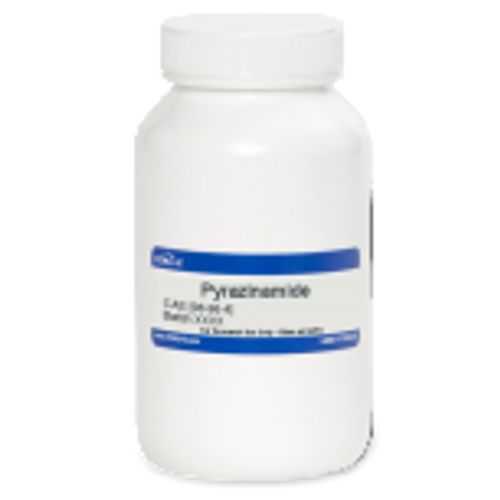Pyrazinamide is a sparingly soluble bactericidal antitubercular drug.
| Mechanism of Action | The mechanism of pyrazinamide is not entirely understood. It is speculated that pyrazinamide enters a target cell and is converted into pyrazinoic acid (POA) which disrupts normal membrane permeability functions. Internal pH of the cell begins to decrease as POA accumulates in the cell’s cytoplasm which is thought to inhibit fatty acid synthase activity. |
| Spectrum | Pyrazinamide is used almost exclusively against Mycobacterium tuberculosis. |
| Solubility | Alcohol: Slightly soluble Methylene Chloride: Slightly soluble Water: Sparingly soluble |
| Impurity Profile | Heavy Metals: ≤10ppm Chloride: ≤140ppm Sulphated Ash: ≤0.01% |
| References | Cynamon, M. H., and Et Al. "Activity of N-propyl Pyrazinoate against Pyrazinamide-resistant Mycobacterium Tuberculosis: Investigations into Mechanism of Action of and Mechanism of Resistance to Pyrazinamide." Antimicrobial Agents and Chemotherapy 39.6 (1995): 1269-271. www.ncbi.gov. American Society for Microbiology. Web. 28 Aug. 2012. |



